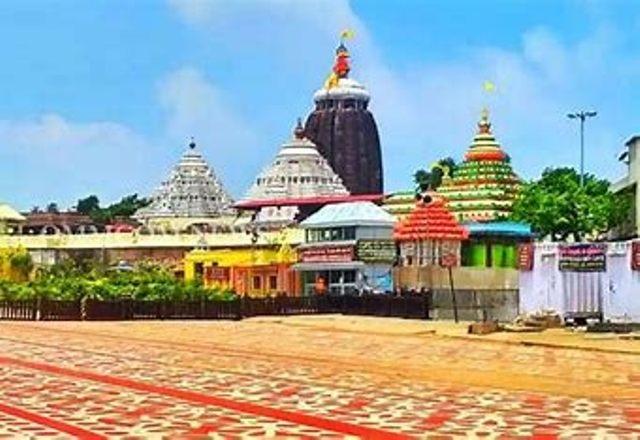Puri: The tradition of decking up Lord Jagannath and Balabhadra in Gajanana or Hati Besha after the ceremonial bath can be traced to the Hindu belief of beginning every religious rite with a worship of Lord Ganesh. After all the ceremony is a prelude to the annual Rath Yatra.
Before Hati Besha, it is time for Snana Yatra when the sibling deities are escorted from the sanctum sanctorum to the Snana Mandap (bathing altar) in a ‘Pahandi’ (procession) after ‘Mangal Arati’. It is here on the mandap that they are given a ritualistic bath after the sevayats perform a complex set of rituals.
It takes place on a full-moon day of Jyeshtha (May-June).
Legends also has it that the Lords are dressed as Ganesh to satisfy the followers of the Ganapatya sect.
The deities take bath to get relief from the summer heat.
These centuries-old rituals show the leela of the “Lord of the Universe” where He performs various human activities everyday including brushing His teeth, bathing and eating the choicest dishes that are a part of Mahaprasad.
Puri is the Bhoga Kshetra of the Lord.
The servitors decorate the deities with flowers and Tulasi (holy basil). King Gajapati Dibya Singh Deb, the first servitor of Lord Jagannath, visits the Snana mandap from his palace. He performs chhera pahanra (sweeping of the floor) at the mandap. He even offers deepa i.e. lit lamp (as shown in the image below).
Then, Gaja Besha is done with the priests chanting mantras. On Snana Purnima, the Gajanana Besha, also called the Hati Besha or Gaja Besha or Gajanan Besha is done. The siblings appear in elephant attire or costume after having holy shower on the Snana mandap. They get dressed like Ganesha, with the head of an elephant. While Shree Jagannatha and Balabhadra are dressed like silver and golden heads of elephant respectively, Devi Subhadra is dressed in Kumari Besha.The elephant attire costumes are prepared by the artisans and sebakas at Raghaba Das matha and Gopal Tirtha matha.
Sola or Solapith artisans along with other traditional craftspeople, many generations of whose families have associated for centuries, create such attire.
There is a story behind Hati Besha. Shree Jagannatha had given darshan in this Besha to Ganapati Bhatt, a staunch devotee of Lord Ganesha. In the 15th century, Pandit Ganapati Bhatt of Mahaganapatya community had visited Puri to have darshan of Shree Jagannatha. However, he was dissatisfied as he did not find his God (Ganesha) within Shree Jagannatha. He had left the temple when a priest encountered him and asked him to revisit the temple to see what he wanted. It is said that Shree Jagannatha had disguised himself as a priest and asked the devotee to return the temple to see Lord Ganesha. That day was Snana Purnima. Ganapati Bhatt was overjoyed to witness Shree Jagannatha as Shree Ganesha on the Snana mandap. The deities had been dressed in elephant attire. The deities are being dressed in Gajanana Besha every year following the holy bath on Jyestha Purnima.
The Gods suffer from fever after the bath. After giving darshan as Hati Besha, as they become ill, they enter the anabasar house (anasara ghara) for treatment and are kept under rest and not disturbed by anyone. Only key sebakas, who provide medicines and aid their recuperation, are allowed access. During the fortnight, devotees are not allowed darshan of the Gods.
Meanwhile, there is worship of Patti Dian. Chitrakaras paint the deities and the same Pattachitra is worshipped for the fortnight during which the deities are recuperating.
After this time, when they fully recover, they set out for their annual journey- the Ratha Jatra. The siblings move in style in their grand chariots from the Shreemandira to their birthplace, the Shree Gundicha Temple.







